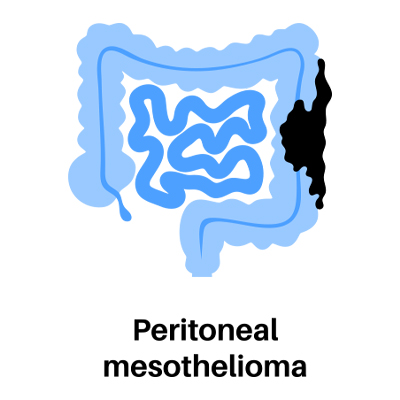
Peritoneal Mesothelioma, representing almost 20% of all mesothelioma cases, is a formidable, asbestos-related malignancy. This comprehensive guide unravels the complex dimensions of this aggressive variant of cancer, extending from its genesis, manifestation, diagnosis to the potential treatment options and prognosis.
Overview of Peritoneal Mesothelioma
Peritoneal Mesothelioma, also known as abdominal mesothelioma, is a rare but aggressive cancer that develops in the lining of the abdomen or peritoneum. Identified as the second-most common form of mesothelioma, this particular variant significantly follows Pleural mesothelioma that originates in the lungs.
– It constitutes 10-17% of all diagnosed mesothelioma cases.
– Roughly 300-500 out of the 3000 U.S. diagnosed cases per year are peritoneal.
– The male to female incidence ratio is evenly balanced in peritoneal cases.
– Avoidance of asbestos exposure is the sole proven preventive measure for peritoneal mesothelioma.
– The primary cause, unanimously recognized, is exposure to asbestos.
Understanding the Causes of Peritoneal Mesothelioma
Peritoneal Mesothelioma originates over an extended period, typically over 40 years post initial asbestos exposure. Exposure to asbestos can vary across occupational, environmental, or secondary spectrums. The risk factor also significantly encompasses individuals serving in the U.S. armed forces.
When ingested, asbestos fibers can navigate to the abdomen via the bloodstream. These trapped fibers induce inflammation and irritation, which may lead to DNA damage and stimulate abnormal cell growth, eventually culminating in tumor formation.
Inhaled or ingested asbestos fibers can infiltrate the peritoneum via the bloodstream, digestive, or lymphatic system. Persistent inflammation and scar tissue formation can lead to genetic aberrations and abdominal fluid buildup, favoring tumor growth and metastasis.
Symptomatic Overview of Peritoneal Mesothelioma
The symptomatic progression of peritoneal mesothelioma includes bloating, abdominal swelling and pain, alternations in bowel habits, fever, and weight loss. A significant portion of patients remains asymptomatic until the disease reaches an advanced stage.
Common Indicators of Peritoneal Mesothelioma
– Abdominal pain and swelling
– Anemia
– Ascites (fluid buildup in the abdomen)
– Bowel obstruction
– Chest pain
– Breathing difficulties
– Fatigue and weakness
– Fever
– Appetite loss
– Nausea and vomiting
– Night sweats
– Unexplained weight loss
The symptomatic similarities between peritoneal mesothelioma and other abdominal disorders often make diagnosis challenging, necessitating a biopsy under the guidance of a mesothelioma specialist. Symptoms may diversify if the tumors metastasize to abdominal organs, including the liver or intestines.
Uncommon Signs and Symptoms of Peritoneal Mesothelioma
Certain serious yet less frequent symptoms might be overlooked due to their rarity. These, along with the common indicators, could be mistaken as symptoms of other diseases or cancers.
– Liver function test abnormalities
– Blood clotting disorders
– Hernias
– Thrombocytosis (high platelet count)
– Hypoglycemia
Staging and Prognosis of Peritoneal Mesothelioma
Without an official staging system for peritoneal mesothelioma, doctors have adopted the Tumor Node Metastasis (TNM) system to define three stages:
Stage 1: Cancerous tissue is minimal, tumors are confined to the abdominal lining, and lymph nodes are cancer-free.
Stage 2: Cancerous tissue is moderate, and tumors have not spread outside the lining or into lymph nodes.
Stage 3: Cancerous tissue is more extensive, and tumors may have spread outside the peritoneal lining or into lymph nodes.
Beyond the third stage, the definition becomes less clear, with the consideration that stage 4 involves extensive tumors that have spread to distant sites throughout the body. Typically, peritoneal patients are diagnosed at a later stage.
The prognosis for peritoneal mesothelioma patients varies greatly depending on the treatment options they qualify for and at what stage the cancer was detected. For example, the 5-year survival rate for all cases of peritoneal mesothelioma is 65%, but this can rise to over 75% for those who undergo a multimodal treatment plan involving surgery, Hyperthermic Intraperitoneal Chemotherapy (HIPEC), and long-term chemotherapy. However, it’s important to remember that the median survival for patients who opt against treatment is six months.
Treatment Options for Peritoneal Mesothelioma
Chemotherapy is currently the most commonly used treatment for peritoneal mesothelioma, but other treatment options include immunotherapy and surgery. One of the most effective treatments involves a multimodal therapy approach that incorporates surgery and hyperthermic intraperitoneal chemotherapy (HIPEC).
Hyperthermic Intraperitoneal Chemotherapy (HIPEC)
HIPEC is a surgical procedure that aims to remove as much cancer as possible from the abdomen, followed by the local application of heated chemotherapy. It’s a complex operation performed on a case-by-case basis. Studies suggest that over 80% of patients who undergo HIPEC survive for five years or longer.
Chemotherapy
Systemic (whole-body) chemotherapy is a common treatment for patients who don’t qualify for HIPEC. Benefits include a response rate of about 30%, average progression-free survival of about 11.5 months, and median survival around 13 months. However, chemotherapy delivered directly to the peritoneum without surgery has a higher response rate of 47%. When combined with heated chemotherapy given during surgery, the response rate jumps to 84.6%.
Immunotherapy and Emerging Treatments
The role of immunotherapy in the treatment of peritoneal mesothelioma is currently under review, with no consensus reached. While the U.S. Food and Drug Administration has approved certain immunotherapy drugs for pleural mesothelioma, their efficacy for peritoneal mesothelioma is still being studied.
Peritoneal Mesothelioma, though rare, poses significant challenges in terms of diagnosis and treatment. However, with advancements in medical research and the development of innovative treatment options, there is hope for improving the prognosis and quality of life for those affected by this aggressive disease.
